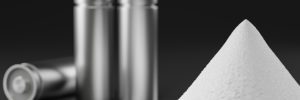Argonne researchers develop low-cost membrane to extract lithium from water

Scientists at the Argonne National Laboratory, in collaboration with the Pritzker School of Molecular Engineering at the University of Chicago, have developed a new membrane technology designed for efficient lithium extraction from seawater and underground saltwater reserves.
The membrane utilizes vermiculite clay, a widely available and inexpensive material that costs approximately $350 per ton. Researchers separated the vermiculite into ultrathin layers—roughly one nanometer in thickness—then stabilized these layers by placing microscopic aluminum oxide pillars between them. This reinforcement prevents structural collapse in water and neutralizes the membrane’s negative surface charge, enabling additional modifications needed for lithium extraction.
To optimize selectivity for lithium ions, the researchers introduced sodium cations into the membrane around the aluminum oxide pillars, creating a positively charged surface. Because lithium ions carry a single positive charge (+1) and magnesium ions carry a double positive charge (+2), the membrane repels magnesium ions more strongly while allowing lithium ions to pass through more easily. This selective capture addresses previous inefficiencies in extracting lithium from salt-rich water sources, promoting higher purity and lower extraction costs.
According to researchers, this filtration approach could also be adapted to recover other key minerals from water, such as nickel, cobalt and rare earth elements essential for battery production. Additionally, the technology may find use in environmental applications such as removing contaminants from water supplies.
Source: Argonne National Laboratory
Source link
